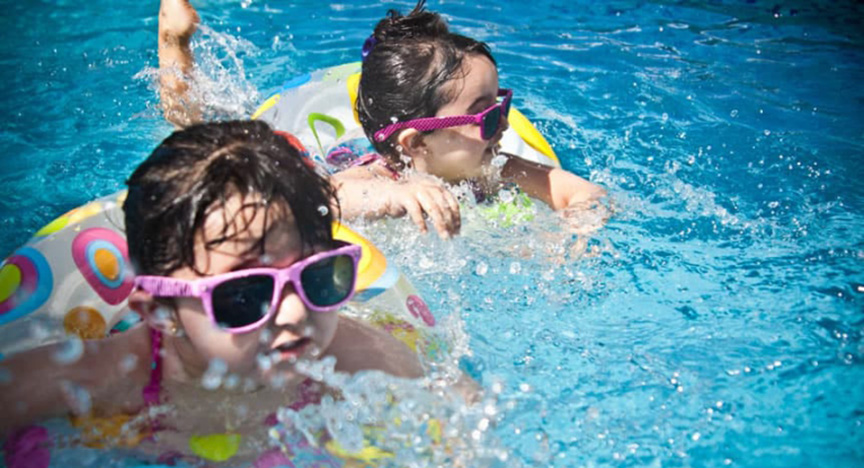
Playing in the pool or at the beach is one of the great joys of growing up in Australia.
But the water is one of the most dangerous places for kids, particularly very young children.
Drowning is one of the leading causes of death in children aged 0 to 4.
While drowning is often portrayed in movies or TV shows as being loud, it actually happens quickly and quietly.
According to the Royal Life Saving Australia, 549 children aged 0 to 4 lost their lives to drowning over the past 20 years.
Children aged 5 to 14 years are also at risk with about 10 children in that age group drowning in Australia every year.
Remember these water safety tips to reduce the risk of drowning.
Always watch your kids near water
Constant adult supervision is the only way to keep children safe around water.
Children are at risk of drowning when swimming or playing in water, from falling into a body of water and while bathing.
Queensland Children’s Hospital Paediatric Intensive Care Deputy Director Dr Adrian Mattke says it only takes seconds for a child to drown.
“Young children have small lungs and can’t hold their breath very long,” Dr Mattke says.
“If they go under water, they can drown in a matter of seconds.
“You need to keep a constant eye on children when they are near water, no matter where it is.”
Children with medical conditions such as epilepsy, seizure disorders, autism and asthma are also at a high risk of drowning.
Make sure a responsible adult is actively supervising a child any time they are in, or, or around the water.
Never rely on older children to supervise younger children.
Ask yourself, who is the designated adult watching the child?
Don’t be distracted
Drownings can be prevented by reducing or removing distractions.
“Many parents tell us they only walked away for a moment or that they were distracted by their phone,” Dr Mattke says.
“All it takes is to look away for just a few seconds to check a phone or grab a towel — that’s when a drowning can happen.”
Ask yourself, are you looking at your kids, or your phone?
Plan to reduce or remove distractions like putting your phone in your bag and keeping essential items close at hand.
If you need to leave the area to use the toilet or answer a call, make sure a designated adult is prepared to takeover supervising the child.
Have a plan for at home and away
Restricting your child’s access to water is one of the ways to prevent drowning.
Look around your home and garden. Ask yourself:
- Swimming pool or spa: Does my fence and gate comply with local laws?
- Baths and sinks: Are the kitchen and laundry secure? Have I drained the water immediately after use?
- Ponds: Is the area gated? Is the water source securely covered?
- Buckets: Are full buckets stored away securely? Do I dispose of water in a safe manner?
Away from home, it is important to be aware of water safety practices at high-risk waterways including the beach, rivers, creeks, lakes and dams.
Have a plan to always supervise your child and be aware of environmental risks like the depth, clarity and condition of the water (like waves and rips) and the weather.
Teach your child to be water safe
Swimming lessons are one of the best ways for your child to learn water safety skills.
Children can attend water familiarisation classes from 6 months of age.
Basic swimming skills are usually introduced in lessons for preschool aged children.
Children who know how to swim can still drown so they must always be supervised by an adult near or in the water.
Teach your child to not go near or in the water without an adult.
Learn how to perform CPR
Knowing how to perform CPR can mean the difference between life and death.
The Queensland Ambulance Service (QAS) provides CPR Awareness sessions at Queensland Children’s Hospital (QCH) for the cost of a gold coin donation.
The 90-minute sessions are run by qualified QAS trainers and take place monthly on a Friday.
Useful websites
- Video: #ittakesseconds for a child to drown
- Kids Alive Do the Five
- CPR Awareness Program
- Keep Watch Actions, Royal Life Saving Australia